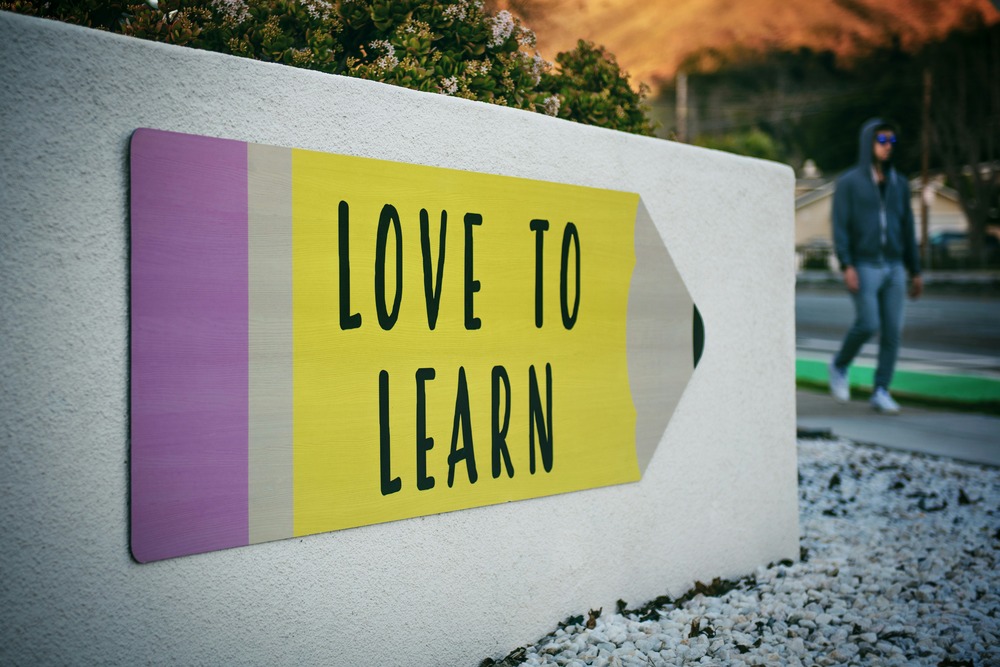Future of Language Learning – Episode 2
If you’re driven by curiosity, growth, or global connection, this is for you. Language learning isn’t about flashcards and grammar drills anymore; it’s undergoing a revolution. With AI-powered tutors, immersive platforms, real-time feedback, and tailored learning paths, how we learn to speak, connect, and understand is changing fast.
Don’t just keep up, leap ahead. The future of language learning is already here.
Have you ever felt like you’re wrestling with an invisible opponent when trying to learn new words? You study, you repeat, you make flashcards, but then, just when you think you’ve got it, the word slips away like sand through your fingers. It’s a common struggle, one that many of us at Word-Flux understand deeply. Here’s Word Mastery, how to do it.
I vividly recall my own battle with learning new technical jargon essential for my role. I’d attend conferences, read papers, and jot down terms, only to find myself drawing a blank days later during a crucial meeting. It was frustrating and frankly, a bit embarrassing. I spent hours cramming, but the information just wouldn’t stick. Then, a colleague introduced me to the underlying principles of how our brain actually stores and retrieves information, specifically focusing on a method that felt counter-intuitive: showing me words just as I was about to forget them. This wasn’t just about memorization; it was about optimizing my brain’s natural learning rhythms. This breakthrough transformed not just my vocabulary acquisition, but my entire approach to learning, and it’s a foundational principle behind everything we champion at Word-Flux.
Unlocking Your Lexical Power: The Science Behind Word Mastery
To truly master new words, we first need to understand where they live in our minds. In linguistics and psychology, this incredible mental storage system is known as your mental lexicon. Think of it as your brain’s personal dictionary, a vast database where you store not just the meaning of a word, but its pronunciation, its grammatical role (like whether it’s a noun or a verb), and much more.
When you hear a word like “cat,” your mental lexicon instantly tells you it’s a small, furry creature that says “meow,” it’s pronounced “kat,” and it’s a noun. But what if you encounter a completely new word, say “wug”? Even without knowing its meaning, your brain can start to process it. If told “wug” is a noun meaning “a small creature,” you can immediately use it in a sentence like, “I saw a wug today!” Your brain is designed to make sense of language, even unfamiliar parts. Similarly, a word like “clus,” even if its meaning is unknown, might intuitively feel like an adjective because of its common English ending. This isn’t random; it’s your brain leveraging the hidden rules of language.



Beyond Simple Words: The Magic of Morphology
Our mental lexicon doesn’t just store individual words; it understands how words are built and how they change. This fascinating field is called morphology, the study of the structure of words and how they’re formed from smaller units of meaning called morphemes. These morphemes include stems (the base word) and affixes (prefixes, suffixes, and even infixes that go *inside* a word!).
Consider the word “drinkable.” Your mental lexicon knows “drink” is a verb, and adding the suffix “-able” transforms it into an adjective meaning “capable of being drunk.” This is called derivational morphology – creating new words from existing ones. We see this everywhere: “sleep” (verb) becomes “sleeper” (noun), “sleepy” (adjective) becomes “sleepiness” (noun) by adding “-ness.” Other common affixes like “re-” (repeat), “un-” (negation), and “-er” (comparative for adjectives) all subtly change meaning and function.
Then there’s inflectional morphology, which deals with variations of a word that don’t change its core meaning or part of speech, but rather indicate grammatical features like tense, number, or person. “Runs,” for example, can be a plural noun or a third-person singular verb. Your mental lexicon handles this ambiguity, choosing the correct meaning based on context. Irregular forms, like “oxen” (plural of ox) or “swung” (past tense of swing), are also stored and accessed on the fly.
The complexity can be astonishing. For instance, in Turkish, an entire English sentence like “if we will be able to make something become strong” can be condensed into a single, incredibly long word by adding a sequence of suffixes and infixes to the stem “strong.” This is possible due to concepts like vowel harmony, where vowels within a word must belong to the same ‘family’ (front or back vowels), influencing which suffix variant is used. In other languages, like Hebrew, words are formed by inserting different vowels into a consonant template (e.g., LMD for learn becomes “lamad” (he studied), “limed” (he taught), “lumad” (he was taught)). Even informal English adheres to morphological rules; you can say “edu-freaking-cation” but not “massachu-freaking-setts” because the infix “freaking” must be inserted to the left of the syllable with the main stress.
Understanding these linguistic principles isn’t just for academics. It’s about recognizing how your brain naturally processes language, giving you a powerful framework to optimize your learning and communication. This deep insight is at the heart of the Word-Flux approach.
Your Arsenal for Vocabulary Domination: Actionable Tactics
Now that we’ve peered into the incredible inner workings of your mental lexicon, let’s talk about practical, actionable tactics you can implement today to supercharge your vocabulary acquisition. These strategies are rooted in cognitive science and leverage the power of technology to make learning efficient, effective, and unforgettable.
Tactic 1: Harnessing Spaced Repetition with Anki & AI
The single most powerful tool for vocabulary retention is spaced repetition. This genius concept, beautifully implemented in apps like Anki and even Quizlet, works by showing you information just as you’re about to forget it. Instead of rote memorization, it optimizes your review schedule, boosting long-term memory.
- Get Started with Anki: Download Anki (it’s free and cross-platform!) and create a new deck. For each new word or phrase, create a flashcard: the word/phrase in your target language on the front, and its translation or explanation on the back.
- Enrich Your Cards: Don’t just stop at text. Include audio pronunciation, relevant images, and, crucially, example sentences. Learning words in context is far more effective than isolated memorization.
- Leverage AI for Content: Stuck on what to learn? Use AI tools like ChatGPT! You can type, “Give me a list of the top 50 most common phrases I would use in everyday conversation in [language],” and then feed these phrases directly into Anki or Quizlet. This ensures you’re learning high-utility language.
- The Lexicon Engine Approach: Think of this as your personalized vocabulary acceleration system. Use AI-based spaced repetition to generate custom word lists based on your conversations and specific learning goals.
- Smart Intervals: Let the app handle the scheduling. It will show you new words frequently at first, then gradually space out reviews as you become more familiar, ensuring the words stick.
- Track Your Progress: Pay attention to which words become “active” (words you can recall and use easily) versus “passive” (words you understand when you see or hear them, but struggle to produce). Focus your efforts on moving passive words into your active vocabulary.
Tactic 2: Mastering Common Phrases & Contextual Learning
While individual words are important, language is truly lived through phrases and sentences. Instead of just learning “hungry,” learn “I am hungry.” This immediately gives the word context and makes it more applicable in real-life situations. As mentioned, ChatGPT is an invaluable resource for generating these common, everyday phrases. Put these complete phrases into your spaced repetition system. The goal is to internalize these chunks of language, making them readily available in your mental lexicon for fluid communication.

Word-flux Cheat sheet
Cue – Make it Obvious:
“Review 5 flashcards using Anki at the same time every morning after brushing your teeth.”
Craving – Make it Attractive:
“Pair your vocabulary review with a cup of your favorite coffee or tea to associate learning with pleasure.”
Response – Make it Easy:
“Add just one new word or phrase per day into your Anki deck using ChatGPT or a language site.”
Reward – Make it Satisfying:
“Track your daily streak or give yourself a tiny reward (like checking off a calendar) after each session.”
Bonus – Make it Contextual:
“Every time you learn a word, write one real-life sentence using it to anchor it in your mental lexicon.”

Join the Word-flux Community!
- Watch Us on YouTube
Explore uplifting videos, insightful conversations, and practical guidance on our YouTube channel. Subscribe and turn on notifications so you never miss a new upload! Watch now: @wordflux - Subscribe to Our Newsletter
Get exclusive tips, insights, and resources delivered straight to your inbox. Whether it’s relationship advice, personal growth strategies, or inspiring stories, we’ve got you covered. Subscribe here. - Follow Us on Instagram
Join our vibrant community on Instagram for daily inspiration, quotes, and behind-the-scenes content. Follow us @Wordflux9 and let’s grow together! - Connect with Us on Facebook
Stay updated on our latest blogs, events, and discussions by following us on Facebook. Let’s build a supportive community where we can learn and grow together. Follow us Word-flux on Facebook.
Your journey to unparalleled word mastery and personal development starts now.
Want to dive deeper? Check out the other parts of this series via the links below:



